Boron, CA, USA
June 6, 2021
On April 16, 2019, I visited the Rio Tinto Borate mine in Boron, California with my project collaborator Dr. Patrick Gasda, who is a planetary scientist at the Los Alamos National Laboratory, to find out more about how borates form in evaporative environments on Earth. This mine visit was important because it helps us understand why elements like boron and lithium enrich in environments possible on Mars. The mine is a terrestrial analog guide for physical and geochemical processes that could take place on Mars. During field planning I contacted Rio Tinto to obtain permits for sample collection and get guidance form a geologist on their team during the visit. This was exciting because I had never visited a mine before, and this was the first time I got to collect samples from a mine for my research. We arrived at the Rio Tinto facility early and got our safety training certificates before entering the mine area.
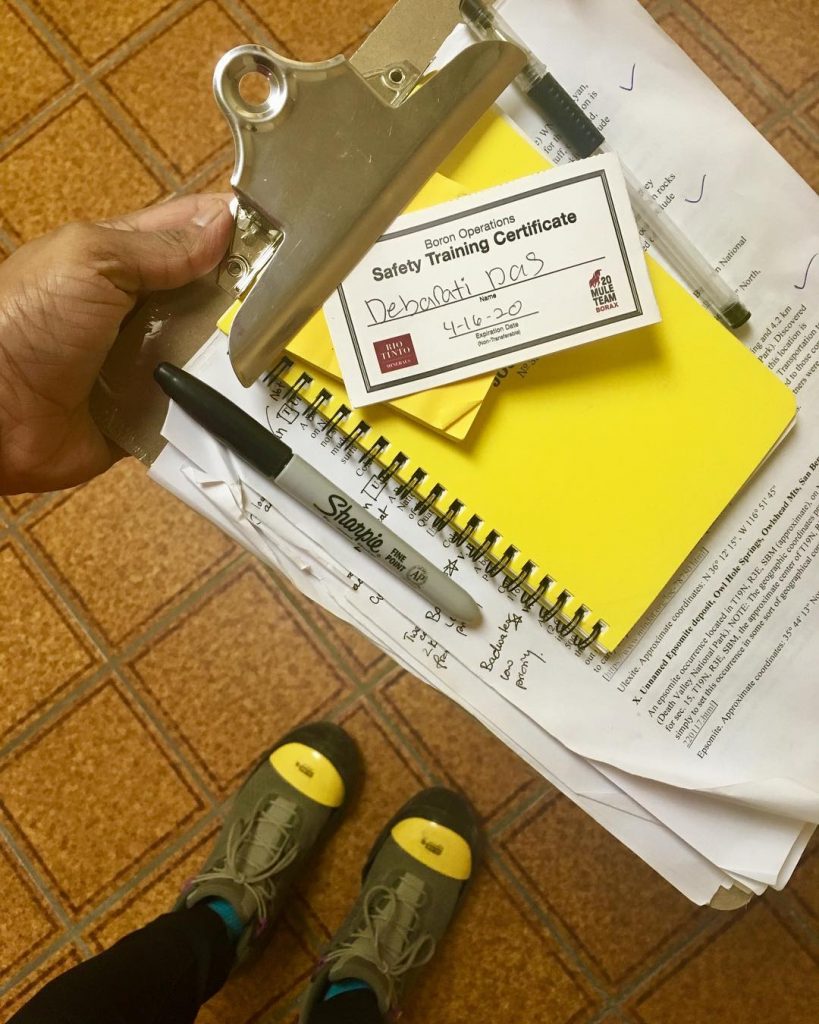
Dr. Roberto Torres who is a geologist at Rio Tinto Borates, met us after we got certified and explained the geology of the area to us. After this, all of us got into a car and Dr. Torres started the drive to potential sampling sites and started telling us about the different types of borates and their possible relationship to the surrounding lithology. As we were driving down into the mine, Patrick spotted some vein-like structures on one of the mine walls through the car. We had to stop and get out of the car to get a better look. The mine wall from where we stood, looked like this:
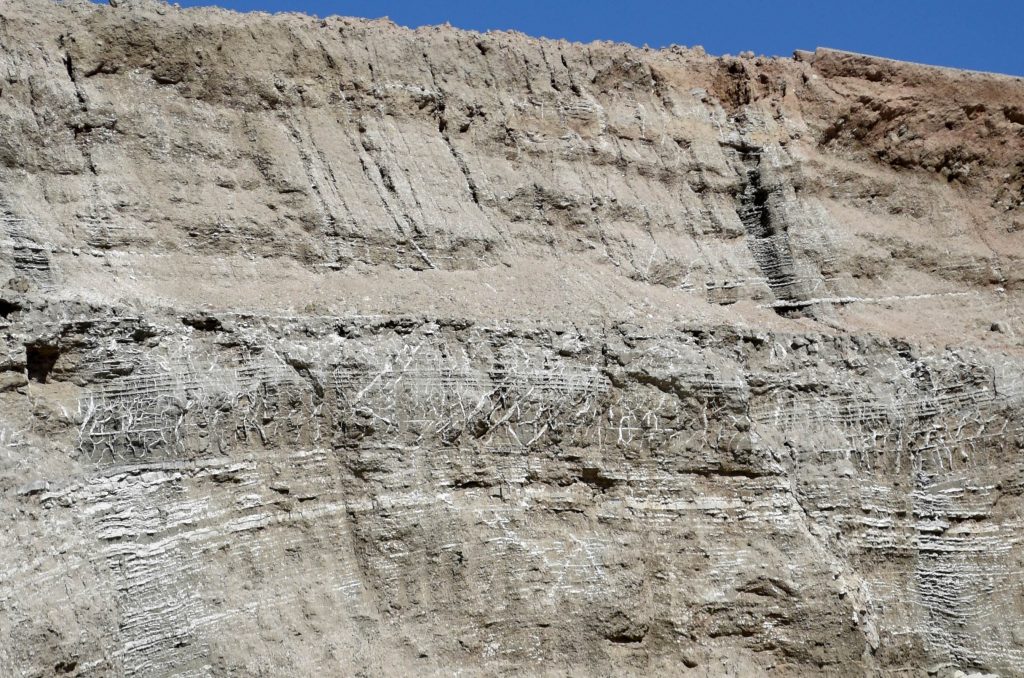
This was a really good spotting because in 2017 when Patrick summarized the results from the first in-situ detection of boron on Mars (in this paper), he predicted a possibility of existence of similar evaporite structures that were remobilized by later generations of water activity (as shown in the image below).

Although this may not be exactly what happened on Mars (as we have not seen any borates on Mars yet), we were thrilled to see these structures. It was nice to be able to see the structures in front of us because it helped us refine the image of possibilities on Mars based on what really does happen on Earth. The parameters on Mars are slightly different but the chemical and physical laws will remain same on both planets. We wanted to take a closer look at the structure, but it wasn’t safe for us to climb up to this area, so we just took a lot of pictures. After spending some time looking at this structure from a distance, we were eager to do some actual sampling. We got back into the car and Dr. Torres started telling us what kind of borates to expect. When we reached the sampling areas, we started spotting the different kinds of borates! Borates are white-ish or clear evaporites so sometimes it is hard to tell them apart. But borates like kernite have a characteristic needle like (or acicular) texture that makes it easy to recognize (and get distracted by because they are also very pretty!). Here is what kernite looks like (the black splotches within the kernite are most likely trapped clay substrate that the kernite was crystallizing near):

The borates we sampled were borax, ulexite, kernite, tincalconite, and howlite. Dr. Torres helped us do a preliminary identification of the borates that were harder to tell apart. We were even able to sample borate veins running through the clay-rich host rock. The samples we collected are very valuable for the research because they help us characterize borates using the ChemCam equivalent laser instrument we use at our labs and help us understand the relationship between the evaporites and the rocks around them. This is harder to do on Mars as the rocks have high amounts of iron oxide (~19 wt%) compared to that of Earth rocks and this interferes with boron signals. Having the access to these samples also means that we can test them using more analytical techniques than possible on the Curiosity rover.
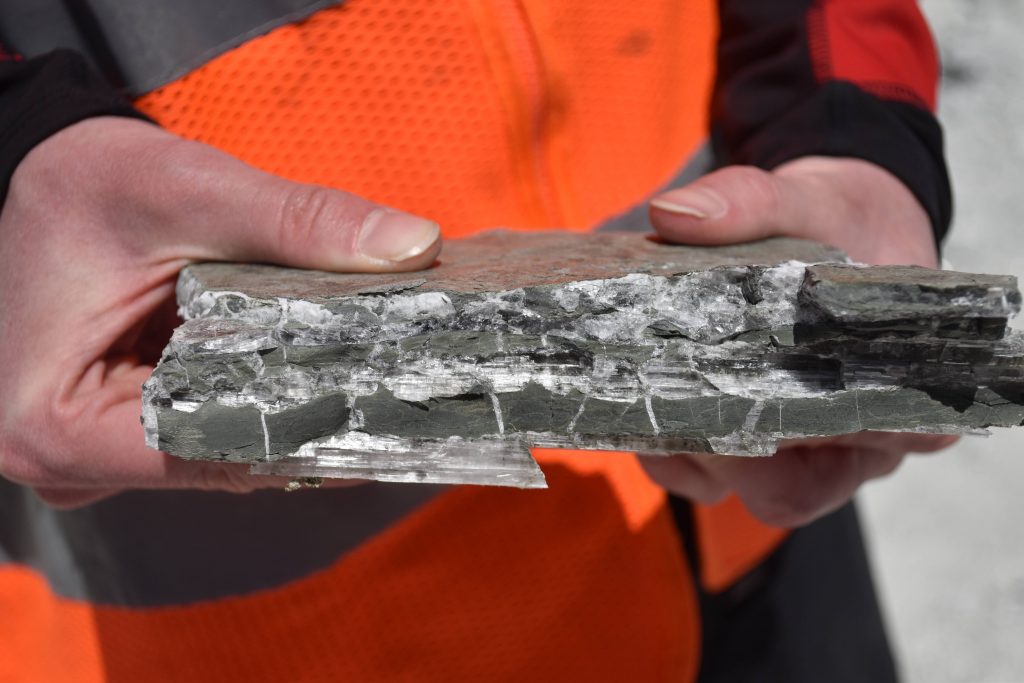
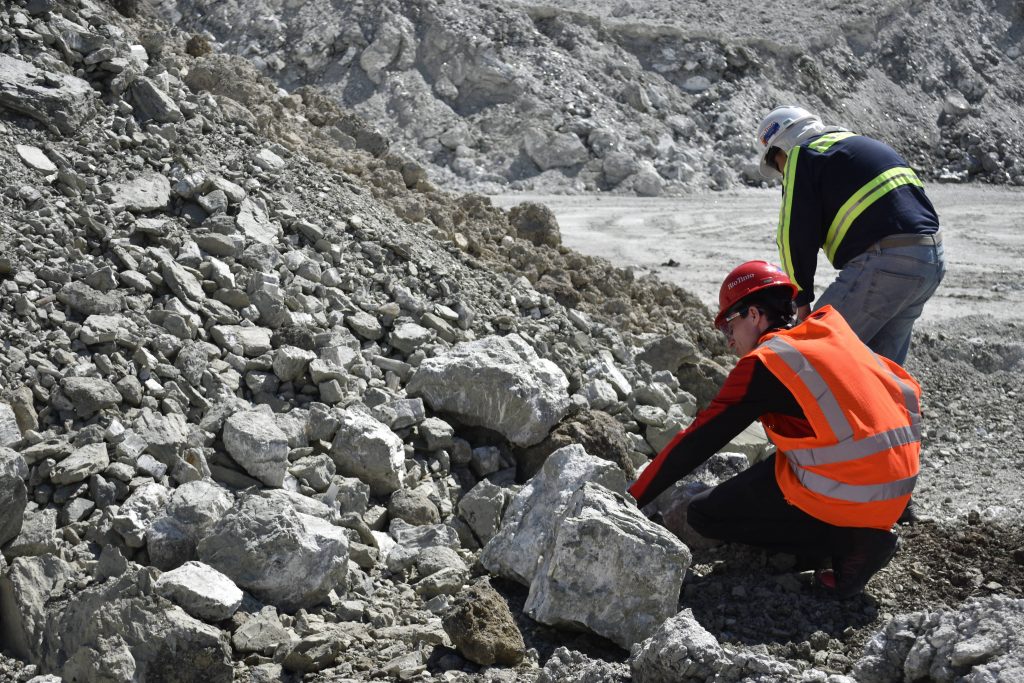
I was so excited to be collecting samples, I didn’t notice the slush next to a mine drainage puddle and stepped right into it. Minor setback. NBD.
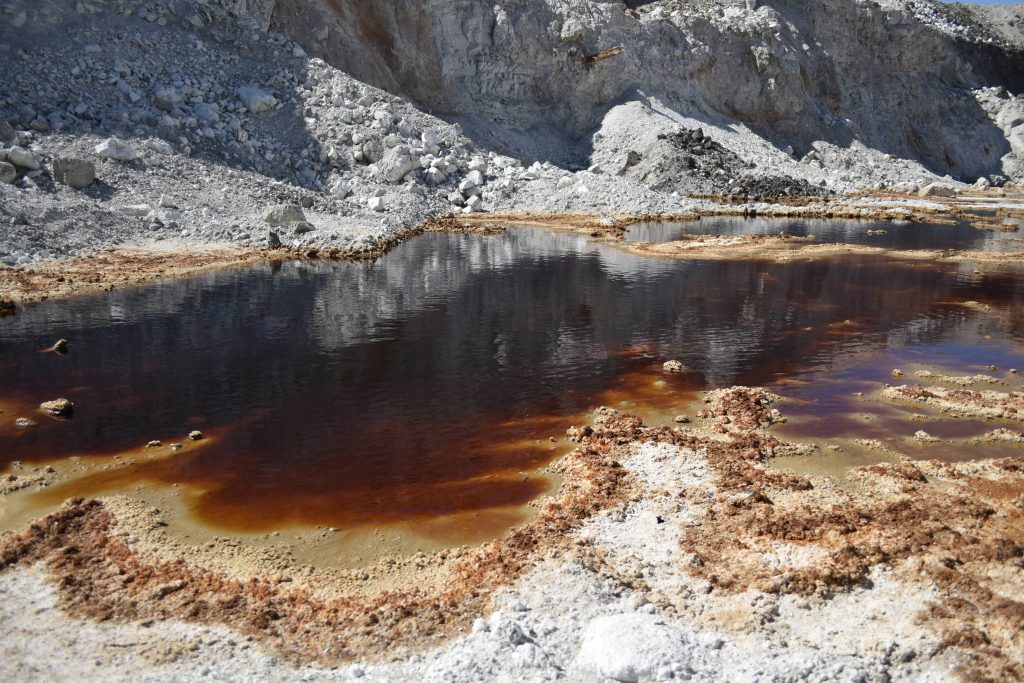
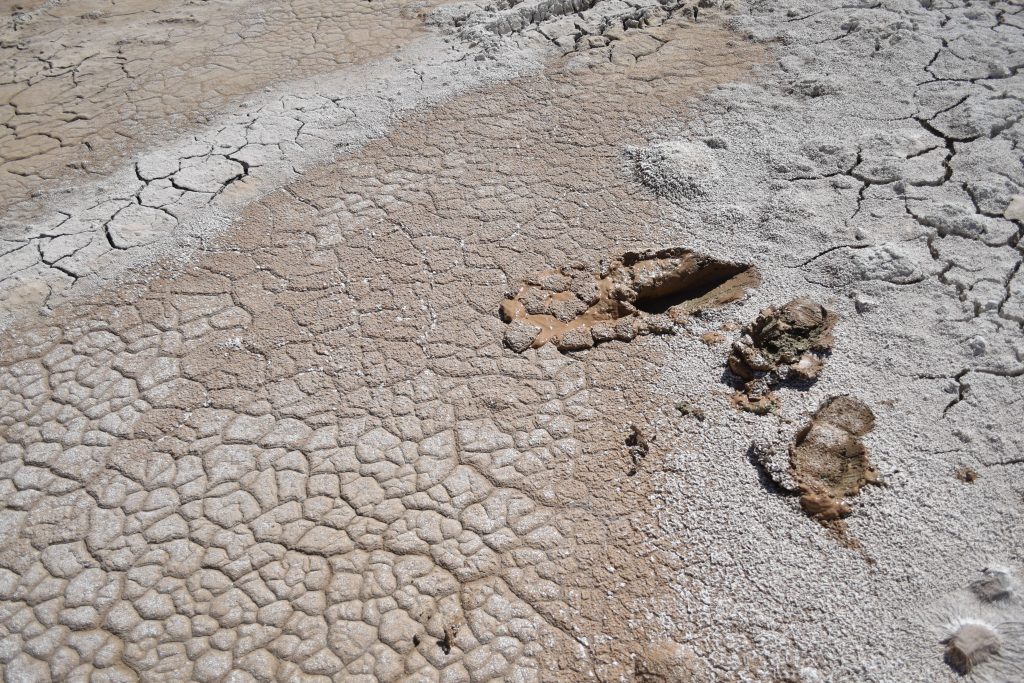
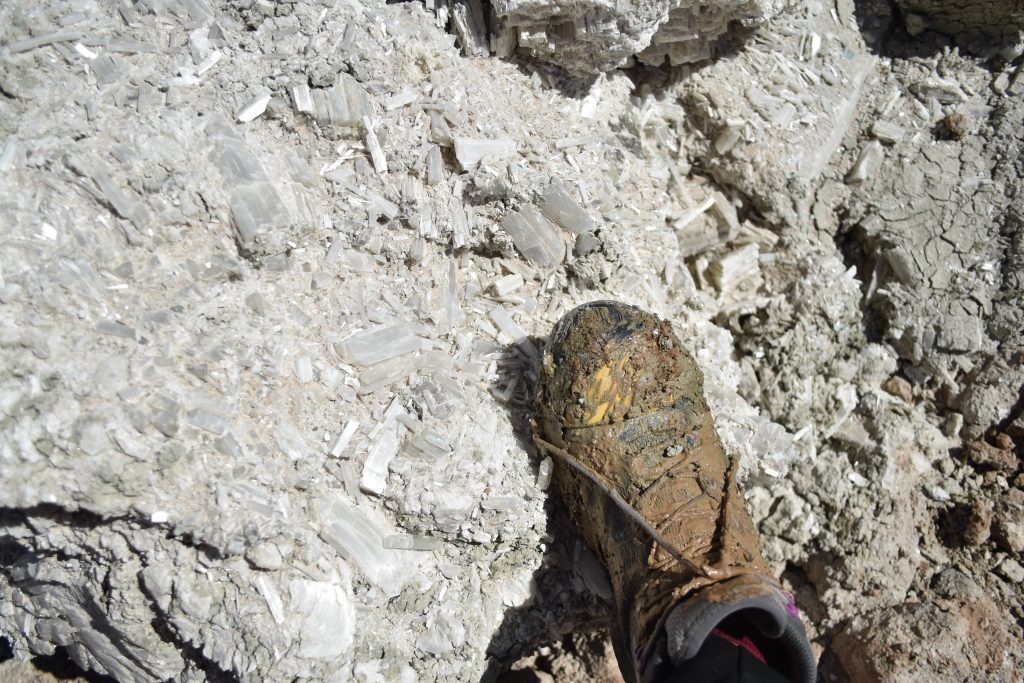
After a while of sample collection from different areas in the mine, we spotted a giant block with vein like-structures similar to what we had seen on the mine wall earlier in the day.
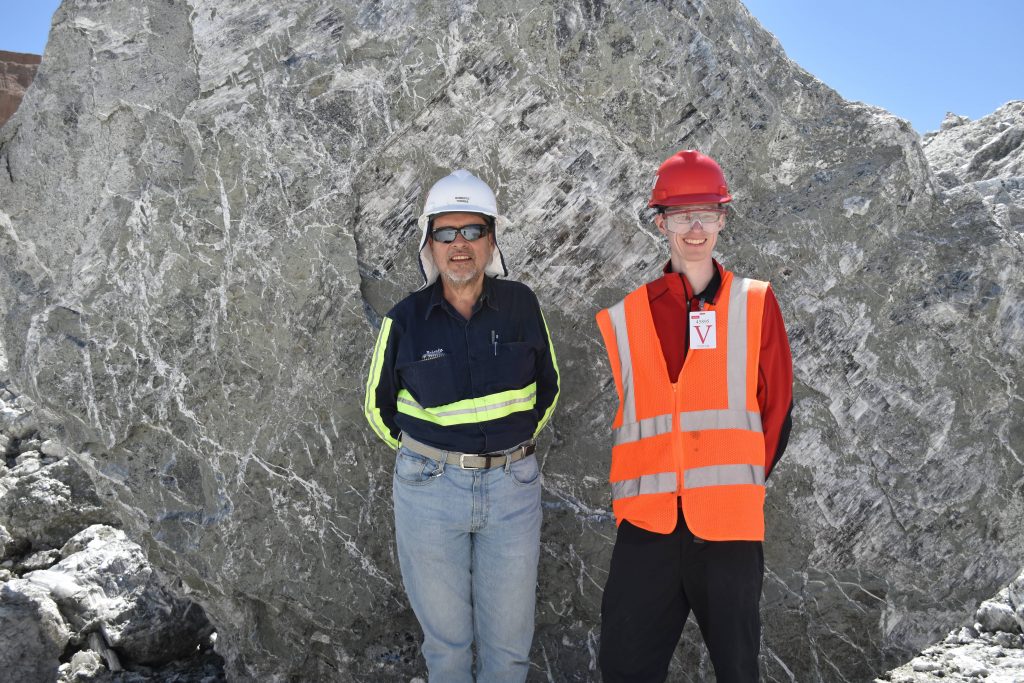
We had been wanting to film a video explaining why this visit is important and this seemed like the perfect backdrop for that explanation! You can find video and listen to the explanation below.
More updates soon to come about field and lab analyses.